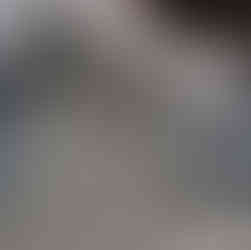
This gable end is in an exposed position which resulted in it weathering faster than the rest of the building. It is also very difficult to access - the neighbour's roof flashing can be seen in the image above. The apex of the wall was in the worst condition and there was a considerable amount of stone repair/ replacement. The apex of the wall was poorly built which is surprising considering that the rest of the building is beautifully coursed with cut and dressed stone. The apex features numerous and extensive running vertical joints. Still, the building has stood the test of time and it certainly wasn't about to be rebuilt.


The wall has clearly been repointed (patched) with cement-based mortar at an earlier date, no doubt when the main premises were split into several residential properties. This mortar has failed and contributed to the decay of the stone. Great care was taken when raking out to prevent large areas of the chimney flues being left exposed. It is also advisable not to drop stones down the chimney(!).

This gable end was worked on through December and January along with the chimney. In the case of the gable end, stone replacement was carried out using NHL 3.5, with a high free lime content. This is so I could be sure the mortar will set deeper into the wall. Using air limes for stone replacement simply means the joints will take longer to dry out. An NHL with high free lime content means the mortar will exhibit sufficient capillary action.
The wall was repointed with hot-mixed quicklime - the only option for working in winter.
As a point of interest, this project was halfway through its completion when a week's worth of consistent sub-zero temperatures hit. Lime mortars must always be suitably protected from heat, cold, drying winds and moisture.








Comments